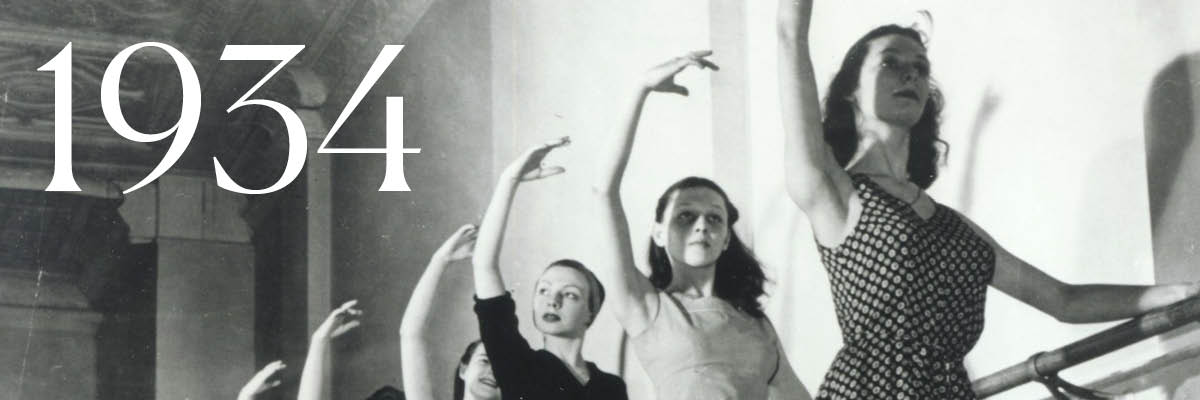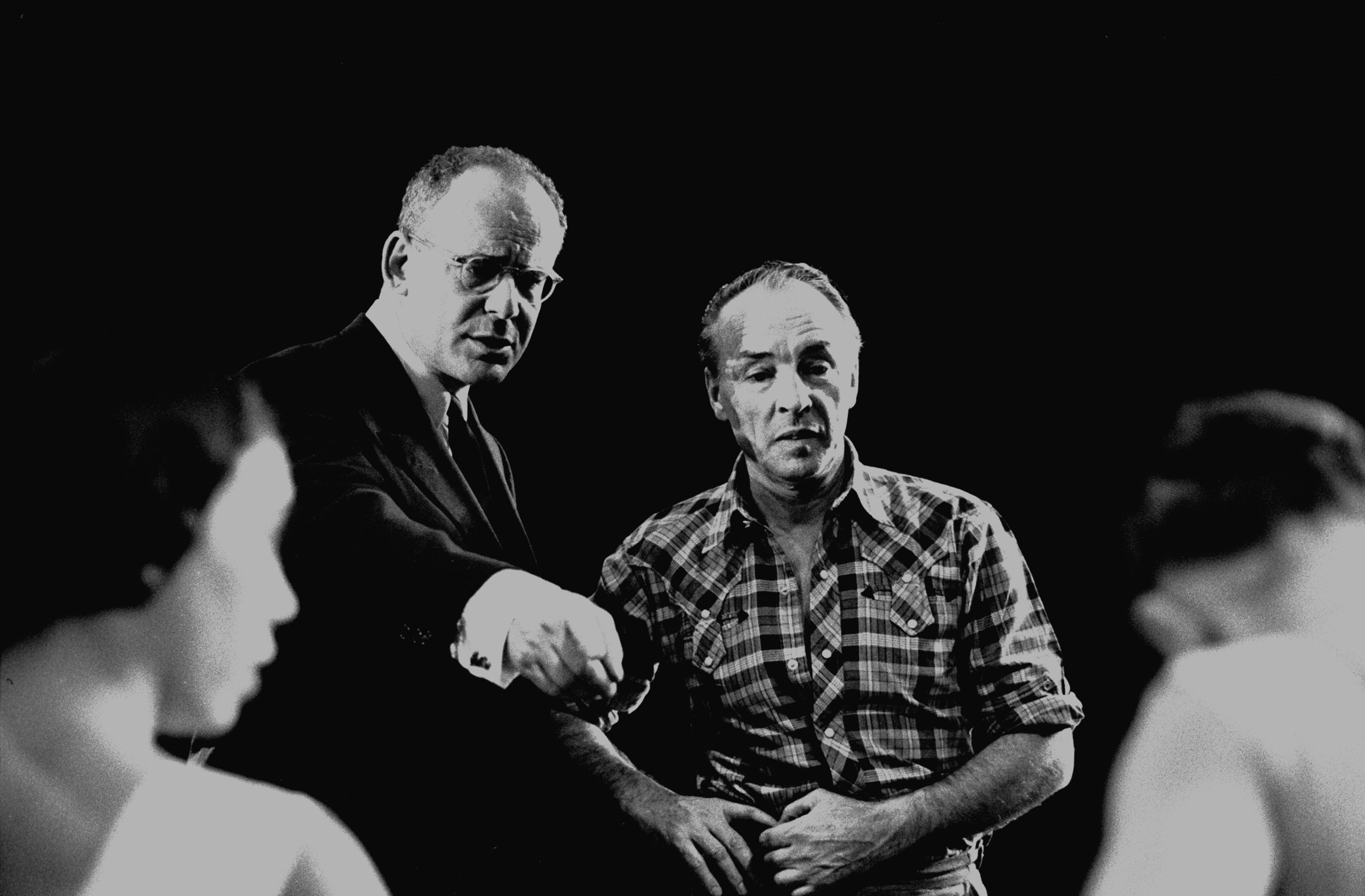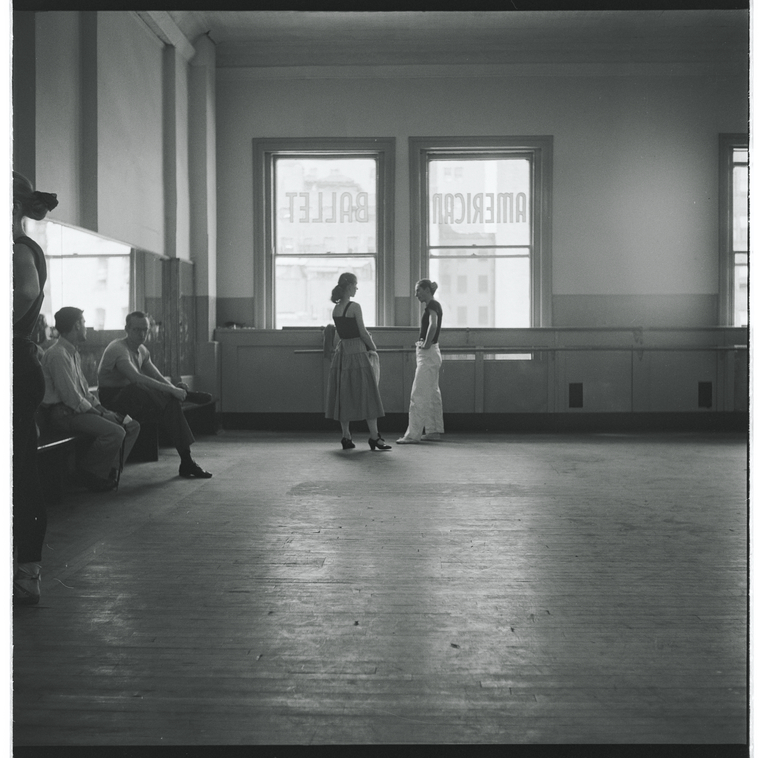April 25, 2024
#SAB90 – 1954: The Nutcracker debuts at New York City Ballet featuring children from SAB
Read the latest edition of #SAB90 to learn more about the history of SAB students performing with the New York City Ballet.

Over the past 90 years, the School of American Ballet has contributed immeasurably to the artistic life of America: giving birth to an internationally acclaimed ballet company, shaping generations of finely trained dancers, and establishing an American style of classical ballet that stands alongside the French and Russian classical traditions. Learn more about the School’s history and influence as we share monumental moments in honor of #SAB90.
At only 26 years of age, Lincoln Kirstein, a wealthy, Boston-born admirer of dance and the arts developed a plan to start a new American ballet tradition equal to the celebrated dance found in Europe. To accomplish this ambitious goal, Kirstein recruited the ground-breaking choreographer George Balanchine, a Russian-trained dancer who had risen to acclaim as the choreographer of Diaghilev’s Ballets Russes.

Balanchine knew that in order to successfully launch a company he would first need to establish a school to train the highly skilled dancers his choreography would demand. At age 29, Balanchine traveled to America to establish the School of American Ballet, which opened its doors on January 2, 1934, on New York City’s Madison Avenue.
“The facility that greeted the students that opening day in 1934 was a spacious one with high ceilings. Most of the classes were given in a large studio with big windows. One wall was lined with mirrors, the other three with ballet barres. […] The School was on the fourth floor, reached by an old and rickety elevator, with painters’ lofts on the fifth, top floor. The offices on the third floor included the premises of the tailor who had moved to make room for the School, only to find himself sewing to the thud of Balanchine and the advanced students as they whirled through mazurkas in character class.[1] ”
SAB’s early curriculum resembled our current day-to-day schedule, with dancers participating in technique, adagio, character, and variations classes six days a week.

Teaching these classes were the School’s earliest faculty members, a group of acclaimed ballet instructors rooted in the Russian, English and Danish classical traditions – Pierre Vladimiroff, Dorothie Littlefield, Muriel Stuart and Balanchine himself.
Pierre Vladimiroff, trained at the Imperial School, had been a premier dansuer at the Maryinsky and with Diaghilev in Europe as well as a distinguished partner of Anna Pavlova.[2]
Dorothie Littlefield came from a family of dancers. Her mother, Caroline Doebele, opened the Littlefield School of Ballet in Philadelphia in 1908, and in 1935 her sister Catherine founded the Littlefield Ballet (Later Philadelphia Ballet), where Dorothie served as ballet mistress and principal dancer.[2]
Muriel Stuart was an English dancer who had performed with Anna Pavlova. She was noted for her lyricism and became an accomplished teacher.[2]
By 1935, the School’s first performing troop had been formed, but a lasting company to permanently and resoundingly fulfill Kirstein and Balanchine’s vision would not come about until over a decade later.
1.Dunning, J. (1985) ‘But First A School’ The First Fifty Years of the School of American Ballet. New York, New York: Elisabeth Sifton Books.
2. Lassalle, N., Rome, Amy R. (2020) School of American Ballet: A History. New York, New York: Ballet Society, Eakins Press Foundation.
April 25, 2024
Read the latest edition of #SAB90 to learn more about the history of SAB students performing with the New York City Ballet.
March 26, 2024
Read the latest edition of #SAB90 to learn more about SAB's early relationship with New York City Ballet.
February 26, 2024
Our new monthly series, #SAB90, we'll be sharing a short article detailing highlights of the School's history. Read our latest edition to learn about more early faculty members who laid the groundwork for the School's legacy.